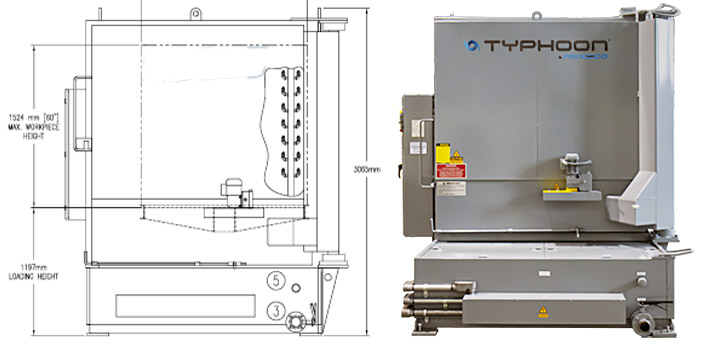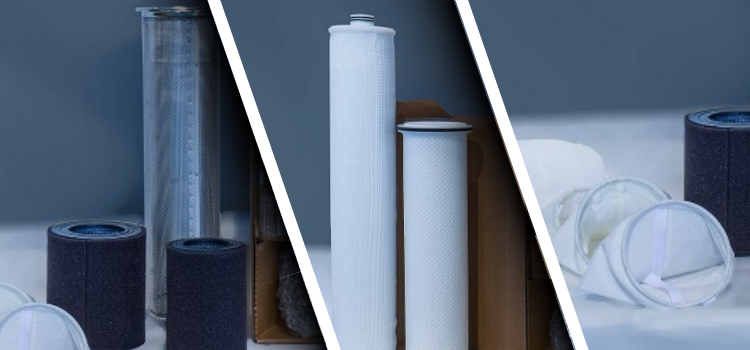Parts washers use electric, gas, or steam heating. Natural gas offers advantages over electric: reduced electrical load, faster heating, enhanced reliability, fuel flexibility, and lower operating costs. Electrical limitations affect equipment size. Our forced-air gas burners optimize heat transfer efficiency. While NG heating has higher upfront costs, it is more cost-effective in the long run.
THE PRACTICAL ADVANTAGE OF GAS HEATING
Typically, parts washers are heated using electrical elements, gas-fired heating systems, or steam heat exchangers. Electrical heating is often the most common choice when lower energy requirements are needed. However, there are several advantages of using natural gas as a heating source compared to electric heating.
1. Gas systems reduce the impact on the electrical load.
2. Gas systems heat washer solutions faster than electric heating due to higher energy output.
3. The reliability of both the infrastructure and the gas burner components is superior.
4. Both natural gas (NG) and propane can be used as a fuel source.
5. From a long-term perspective, NG has lower operating costs.
Reliability of supply
There are many reasons to choose NG as the heating source for your next PROCECO washer; the availability of NG is one. As of 2019, Canada was the sixth largest global NG producer, accounting for 4.3% of the global supply. Canada has a robust and well-developed production, processing, and transmission system that is rarely affected by everyday events.
A factor to consider is the limitation of the electrical supply within a manufacturing facility, which may be limited by the overall load of the many machines in the building. It can also limit a company's capability to install new equipment in future. As a result, this can limit the size of washers that can be used, especially for electric heaters of 50kW and greater.
Reliability of Burners
PROCECO uses forced-air gas burners that fire into a large-diameter heating tube in the wash and rinse tanks. The overall heat transfer efficiency of gas heating is optimized at 70-80%. The blower's low horsepower requirements result in cost savings, clean combustion, and reliable performance.
PROCECO industrial gas-heated systems provide clean, low NOx heating for tube firing. Gas flows out through the mixing nozzle, combining with the swirling combustion air. This creates a long, swirling flame that moves down the firing tube, effectively cleaning the tube walls and improving heat transfer efficiency. These factors contribute to longer tube life and ensure consistent and uniform heating.
Upfront Cost
Typically, NG heating systems have a higher initial equipment cost. A typical NG heating system in a parts washer includes a gas burner, gas train, immersion tube (for combustion), and flue stack. It's essential to design the immersion tube to fit the washer's footprint, ensuring maximum heat transfer efficiency and a high enough flue exit temperature to prevent condensation. The gas flue or chimney must also be vented outside, making it best to limit its length. Before operating, the NG system must be inspected and approved by a local authority, incurring additional costs.
Operating Costs
To compare the energy cost of using electricity and NG, we assume Eastern Canadian utility rates of 0.12 $/kWh for electricity and 0.44 $/m3 for NG.
If we assume that a solution temperature of 140˚F requires around 40 kW of heating, the heating system operates for 12 hours in a 24-hour cycle, and the system runs for 20 days per month.
• Cost for Electricity: $13,825
• Cost for NG: $7,000
That is roughly 50 percent cheaper to heat the washer using NG rather than electric.
Long-Term Operation and Life Expectancy
Gas heating systems should be inspected every year by a certified technician. Cleaning of the elements yearly is also recommended to help improve the system's life span. A heating system can last over 15 years if properly maintained.
In comparison, electrical heaters are easily damaged and require more frequent replacement. They are more affected by scale build-up, which is one of the leading causes of replacement due to premature burnout. Generally, elements are replaced every five years, and the cost per element is around $700.00 or more, depending on the element size.
Schedule a free consultation with the PROCECO team today.
.webp?height=400&name=Banner%20Practical%20Adv%20(700%20x%20350%20px).webp)


.jpg)